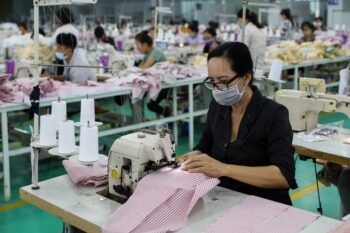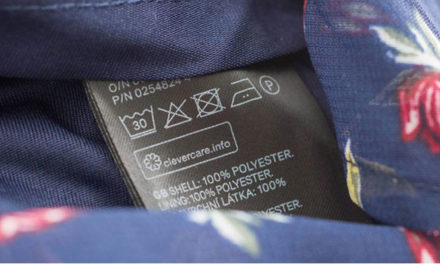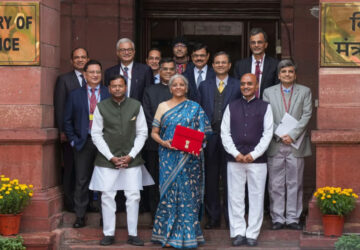 Vietnam earned $9.3 bn from garment and textile exports in the first quarter of this year, and the goal of raking in $44 bn from exports for the whole year will certainly be feasible, said Nguyen Thi Tuyet Mai, Deputy General Secretary of the Vietnam Textile and Apparel Association (Vitas) at a workshop held recently.
Vietnam earned $9.3 bn from garment and textile exports in the first quarter of this year, and the goal of raking in $44 bn from exports for the whole year will certainly be feasible, said Nguyen Thi Tuyet Mai, Deputy General Secretary of the Vietnam Textile and Apparel Association (Vitas) at a workshop held recently.
According to Mai, most major consumers of Vietnamese garments and textiles such as the US and Europe are reining in inflation, helping to fuel purchasing power. In addition, inventories of major brands are decreasing, opening up opportunities for Vietnamese exporters. Garment making will gather full steam unless there are major economic fluctuations and more geopolitical conflicts, said the Vitas official.
In fact, many garment businesses have received more orders from importers. Pham Xuan Hong, Chairman of the Ho Chi Minh City Association of Garments, Textiles, Embroidery and Knitting, said the number of orders for the second quarter has kept pouring in, up 10-15% compared to the same period last year, helping businesses regain confidence.
Meanwhile, Thanh Cong Textile – Investment – Trading Joint Stock Company has almost received enough orders for the third quarter of 2024. The firm expects it will receive more orders in the fourth quarter of the year which is also the peak production period to meet market demand for the festive season.
Similarly, Dong Xuan Knitting Company Limited, has received enough orders from Japanese importers until the end of the third quarter of 2024. However, like most garment makers, its unit prices have yet to improve much compared to 2023.
Challenges ahead
Despite orders pouring in, production and business activities are yet to fully recover, as brands are hesitant to decide on orders, and many importers are still monitoring the impact of political fluctuations in the world market as well as the recovery of a number of major economies. In addition, as the Vitas Deputy General Secretary pointed out, up to 80 percent of a total of more than 6,000 garment businesses are small- and medium-sized firms and they mostly execute export contracts, creating a large imbalance in the domestic market of 100 mn consumers.
Other challenges such as high material prices, high logistics costs due to the Red Sea conflict, and strict requirements in terms of the traceability of raw materials and lower carbon emissions bring to bear more pressure on businesses.
An important challenge that cannot be ignored is the digital transformation process towards smart manufacturing – an inevitable trend that forces businesses to change to adapt, by gradually converting to smart production to increase labour productivity, improve product quality, and optimize operating costs so as to increase competitive advantage, noted Mai.
Fortunately she revealed that under the national textile, garment and footwear development strategy to 2035, the local garment industry is gradually shifting from rapid development to sustainable development according to the circular economy model.
The Vitas official suggested that textile and garment enterprises need to build your own product brands to gradually replace exported products that still have to bear the names of other major brands globally.
Kevin Trinh Vu, deputy sales director of Lectra Vietnam Co., Ltd. said that local firms will save labour costs if they effectively apply technology and optimize the production process.
In his opinion, as manufacturing automation and smart production are an inevitable trend, businesses should change to meet customer and market requirements. Automation will help increase labour productivity, improve product quality, optimize operating costs and sharpen competitive advantage for businesses.


















